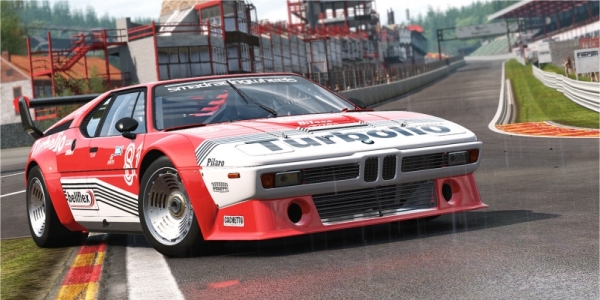Project CARS Hits Some Hardware Limits On Xbox One, PS4

In a recent interview, creative director for Slightly Mad Studios' Project CARS, Andy Tudor, talked briefly about the design process for the game and what some of the benefits and drawbacks were of porting the game to consoles.
Gaming Bolt managed to land the interview with Tudor, where he revealed that the PS4 and Xbox One aren't quite up to par to the glorious awesomeness of the PC Master Race technology.
According to Tudor...
“It’s been challenging splitting the renderer further across threads in an even more fine-grained manner – even splitting already-small tasks into 2-3ms chunks. The single-core speed is quite slow compared to a high-end PC though so splitting across cores is essential.“The bottlenecks are mainly in command list building – we now have this split-up of up to four cores in parallel. There are still some bottlenecks to work out with memory flushing to garlic, even after changing to LCUE, the memory copying is still significant.”
The single-core speed is quite slow, as evidenced by the recent benchmark test between smartphones, tablets, home consoles and PCs, where it was revealed that the PS4 has faster processing than the Xbox One.
Still, despite the PS4 having an advantage over its competitor, it's still no match for the almighty i7 (or even a well endowed i5 for that matter).
Tudor, in the interview with Gaming Bolt, also briefly covers the Xbox One as well, making note of what they're using the system's highly controversial eSRAM for, and how it could help with loading shaders quickly into and out of memory...
“Our engine uses a light pre-pass style rendering approach and after experimenting with a number of different variations we found it was more efficient to use eSRAM to hold the deferred render targets. Careful use of eSRAM like this for the various render stages mitigates some of the advantage that PS4 has with its faster unified GDDR5 memory,”
I was wondering what the eSRAM would be good for since it only has 32MB of cache. Using this small piece of tech as a placeholder shaders seems reasonable enough.
Your Daily Blend of Entertainment News
Tudor also talks about why they decided to move on and away from last-gen consoles. Not only are they old and technologically geriatric, but they don't offer any of the capabilities to make use of the compelling features that have helped shape Project CARS during this time, with Andy saying...
“There were a number of factors that influenced the move… firstly the power of the next-gen consoles allows the game to be showcased as it was ‘meant it to be seen’, the pipeline and architecture of the new machines makes the development process easier, we see the sharing features on both consoles as being extremely engaging for players, the ability to self-publish is appealing, retail space for last-gen games will slowly dwindle over the next year, and also given our timeline for launch there’ll be a better balance of the number of people out there in the mindset for next-gen gaming compared to those still playing their existing consoles.”
I think that's a reasonable way to look at it. That's not to mention that the game's physics and visuals would require massive down-scaling (and down-grading) in order to run at a reasonable frame rate on the PS3 and Xbox 360. Going ahead and making the jump to the new-gen consoles just seems smart.
Also, the inclusion of the sharing features will be nice, especially given that Project CARS gained its media fame from those who bought into the alpha sharing their videos and screenshots with the rest of the gaming community. Some of these videos include the undeniably awesome In Time video or Jonz' incomparably well-crafted trailer called Speed and Sound.
Slightly Mad Studios is working with a budget of just over $5 million and they're targeting a later 2014 release for the Xbox One, PlayStation 4, Wii U and PC.
Staff Writer at CinemaBlend.

